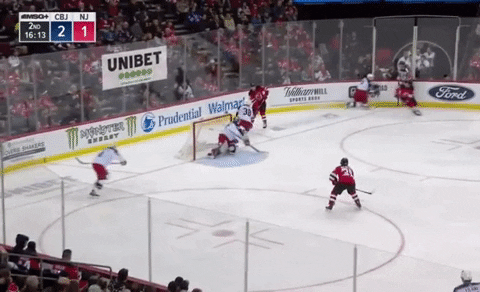Language is a powerful tool. If you have been around the sun a few times, you already understand that many times it’s not what you say, but how you say it.
Getting athletes, particularly pre-pubescent athletes, to grasp their on-ice roles can be a challenge. Creating language to help them conceptually grasp their roles is a key item.
Heck, I know NHL prospects and NHL players that use the below language when talking about their game.
Bull, Fox, & Eagle
For example, we can use terms when it comes to on-the-puck defense, close off-the-puck defense, and away from the puck defense. For a clear mental picture, we recommend thinking of a forecheck to start.
Bull
The Bull is the player whose job is to pressure and attack the puck carrier.
Fox
The fox is cunning and reads where the puck is going next and will pounce on it.
Eagle
The eagle is soaring above the play to add another layer of defense.
Forecheck Example
In action we can see these 3 roles play out on the forecheck. These roles can also apply on the backcheck. Link for more background knowledge on backechecking.
The first player (F1) hounds the puck to create a battle, the second player (F2) reads where the puck is going next to knock the puck away, and the third player (F3) is reading the play from a high support position. Watch F3’s skating and how he re-routes as the play changes.
Every player understands and plays their role perfectly. They end up rewarded with a great goal.
Hound, & Spider
Hound vs Spider to a concept we touched on before when looking at the Michigan Trio (Kent Johnson, Owen Power, and Matt Beniers). Specifically, we talked about how players go about getting their puck touches.
Hound
The hound is similar to the bull. They go hound after the puck and apply pressure to cause turnovers.
Spider
The spider is the player that reads and is in the center of the web. They allow the play to come through them. Rather than using pressure to cause turnovers, spiders are adept at picking off passes.
Application
Fluidly Playing The Roles
Different times call for players to play different roles. Being able to play all of the roles is critical for players as they move up the hockey pyramid.
The first step is awareness of where you are and what role you need to fill. A simple language trick such as “eagle” helps trigger the action and positioning required to fulfill the proper role.
Getting puck touches
These roles feed into high-level hockey and playing a transferable game.
For example, at the younger ages, there are many loose pucks, and putting pressure on the puck carrier can easily cause a turnover. Top players naturally tend to have hound tendencies. You go to a typical youth hockey game, you’ll see a bunch of bulls and not a lot of foxes or eagles.
But hounding the puck as a means of acquiring the puck becomes less and less prevalent as the level of play increases. Players with spider tendencies tend to shine through as patience and picking their spots becomes increasingly valuable.
Further Reading
Did you enjoy this newsletter?
Help us spread the ideas within and share it with the people you care about





